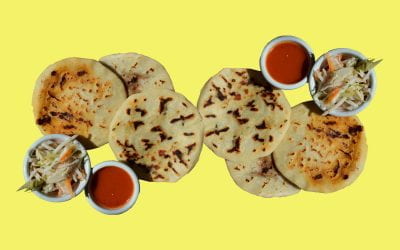An Aztec Remedy
Lois Wasserspring was feeling sick, really sick; her entire body was aching and she thought she was going to die. It was 1968, and Wasserspring, now a DRCLAS affiliate who is co-director of Latin American Studies and faculty director of Internships in Costa Rica at Wellesley College, was doing thesis research in the small village of Tepoztlín, Mexico.
It was a golden opportunity to spend a year living for a family in an interesting?and famous?village which anthropologist Redfield had studied in the 20s, and Oscar Lewis in the 40s. In Morelos state, not far from its capital, Cuernavaca, Tepoztlín had become home to the young graduate student.
Now all she wanted to do was go home or, at the very least, not die. She had never felt so awful in her life. Señora Moreno, her host mother, patiently applied plantain leaves to the soles of her feet. They didn’t work; Wasserspring felt as if she was burning up. Somewhere in her fog, she heard her host mother say to some other women, “Let’s try the ancient Aztec remedy.”
She heard the women in the kitchen and then some sort of squealing or squawking and then a silence. She was afraid. This was going to be some sort of horrible animal sacrifice and she would have to drink blood or who knows what. She was sick enough as it were. And she couldn’t be offending cultural sensibilities. What kind of awful Aztec remedy would she have to undergo?
She waited forever, drifting in and out of sleep. And then her host mother emerged from the kitchen with a large bowl. And it smelled good and somehow very familiar. Wasserspring reached for the bowl.
It was chicken soup. The squawking had been the butchering of a chicken.
And the funny thing was that the ancient Aztec remedy? A crosscultural solution, if there ever was one, to a myriad of sicknesses?actually seemed to work! The next day, she felt much better and eager to move ahead with her thesis.
Spring/Summer 2001
Related Articles
Salvadoran Pupusas
There are different brands of tortilla flour to make the dough. MASECA, which can be found in most large supermarkets in the international section, is one of them but there are others. Follow…
Salpicón Nicaragüense
Nicaraguan salpicón is one of the defining dishes of present-day Nicaraguan cuisine and yet it is unlike anything else that goes by the name of salpicón. Rather, it is an entire menu revolving…
The Lonely Griller
As “a visitor whose days were numbered” in Buenos Aires, Argentina, he tossed aside dietary restrictions to experience the enormous variety of meat dishes, cuts of meat he hadn’t seen…



